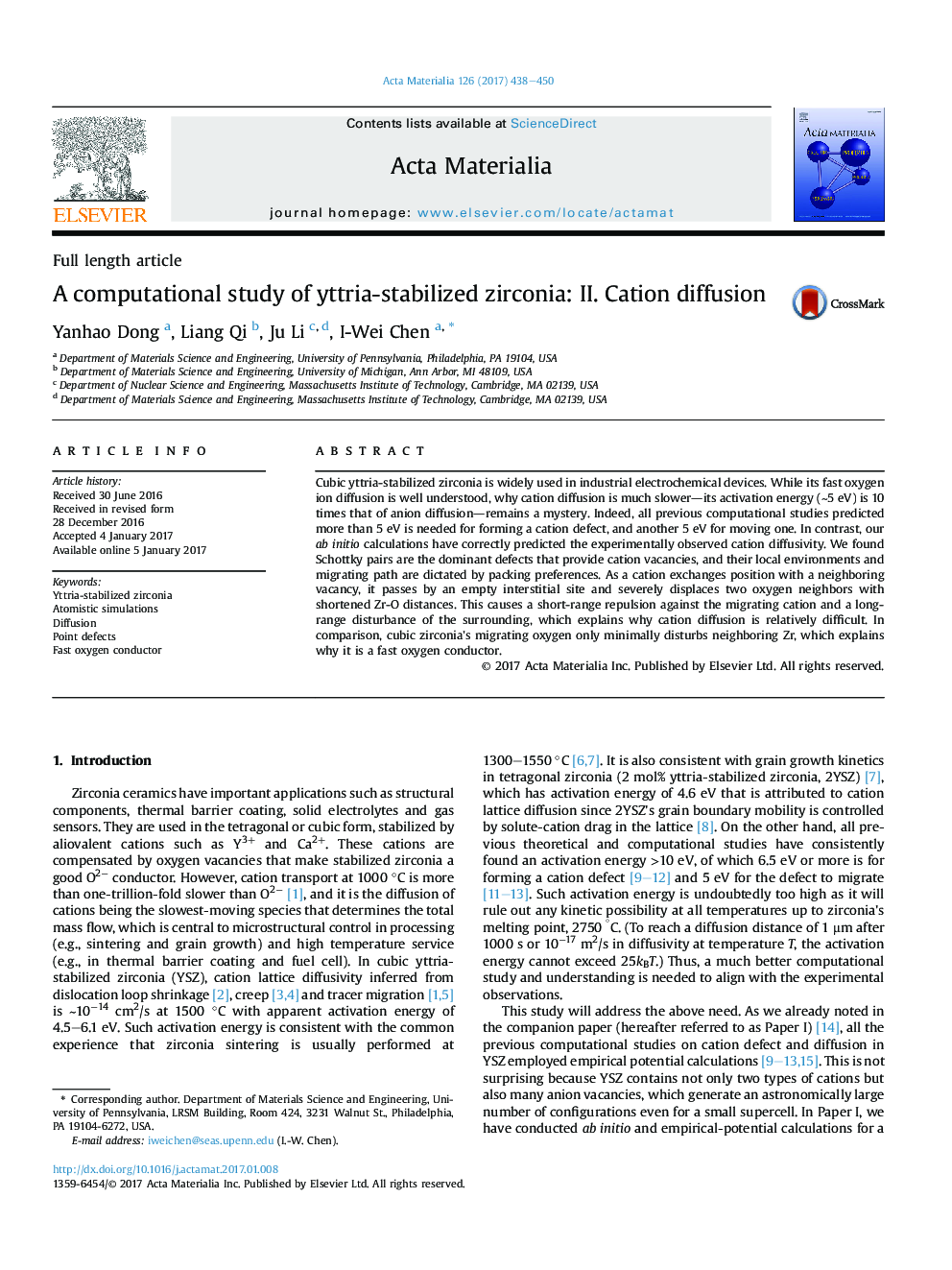| کد مقاله | کد نشریه | سال انتشار | مقاله انگلیسی | نسخه تمام متن |
|---|---|---|---|---|
| 5436400 | 1509550 | 2017 | 13 صفحه PDF | دانلود رایگان |

Cubic yttria-stabilized zirconia is widely used in industrial electrochemical devices. While its fast oxygen ion diffusion is well understood, why cation diffusion is much slower—its activation energy (∼5 eV) is 10 times that of anion diffusion—remains a mystery. Indeed, all previous computational studies predicted more than 5 eV is needed for forming a cation defect, and another 5 eV for moving one. In contrast, our ab initio calculations have correctly predicted the experimentally observed cation diffusivity. We found Schottky pairs are the dominant defects that provide cation vacancies, and their local environments and migrating path are dictated by packing preferences. As a cation exchanges position with a neighboring vacancy, it passes by an empty interstitial site and severely displaces two oxygen neighbors with shortened Zr-O distances. This causes a short-range repulsion against the migrating cation and a long-range disturbance of the surrounding, which explains why cation diffusion is relatively difficult. In comparison, cubic zirconia's migrating oxygen only minimally disturbs neighboring Zr, which explains why it is a fast oxygen conductor.
Ab initio calculations have been used to provide the correct cation diffusivity and its activation energy in yttria stabilized zirconia.Figure optionsDownload high-quality image (139 K)Download as PowerPoint slide
Journal: Acta Materialia - Volume 126, March 2017, Pages 438–450